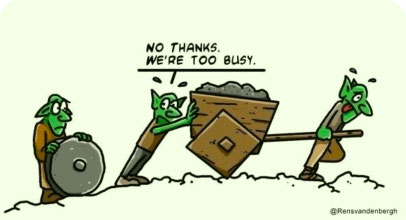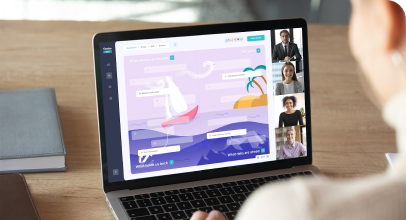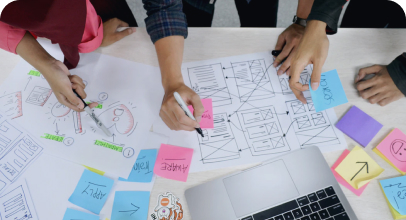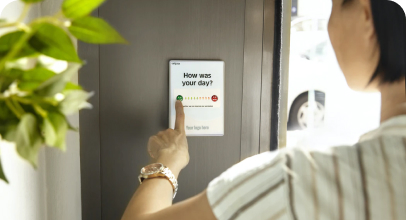
If you’re reading this article, you might be approaching the end of a project or phase. Congrats to you and your team! That must have been a long and challenging journey. Everyone’s been working hard and your last retro should be a special one.
There’re quite a few things you’d probably like to recall during your final retrospective. We’ve gathered the latest retro objectives, best practices and gaming techniques. So that you can look at your inspect & adapt objectives not only from the point of the last sprint but the whole project. Just pick up those you feel your team needs or risk to take them all and still have your retro within a time box.
Let’s look at the objectives that you might need to include into your last retro.
- Recall all important milestones
- Summarise achievements and success stories
- Gather lessons learnt
- Explore overall team process and list improvements
- Praise, celebrate and motivate
1 - Break the ice with One Word technique
It is going to be a special meeting. Try warming your team up with something quick and simple. Ask them to describe a project in One Word. This will activate their retrospective thinking and set the tone for the next exercises
2 - Build the timeline of the project to remember all important milestones
As long as you’re recalling not only the last sprint but the whole project the team might have already forgotten how it was. Ask them to draw a personal timeline of a project. They can remember any milestones that were important to them. Share your timelines with each other. Read them out loud or ask the team to comment.
You can also try and draw just one timeline together where you as a Facilitator will ask the milestones from the team and place them on a timeline. This way you will remember a lot of important achievements or lessons with no judgement yet. That will help to set a context of inspection & adaptation.

3 - Measure the final health check and compare it to your baseline
If you’ve been tracking team health, team morale or team remote adaptation metrics during the project, it would be great to see the dynamics of it from sprint to sprint. Check what were the initial results, best results and worst one. Have you managed to improve that or the end was tough and challenging and brought more room for improvement?
You can read more about health checks in the article Team health check: how Timbo can help in getting great insights or visit our Youtube page to watch the recording of the webinar Agile team health & morale checks.
3 - Focus on lessons learnt and future considerations for the Main Stage
As it’s final retro, one of the most important things is to summarise accomplishments and lessons. We recommend choosing templates that will focus on what the team achieved or liked and also leave a space for future improvements. One of the most suitable templates are:
- FLAP (Future сonsiderations, Lessons learnt, Accomplishments, Problem areas)
This one allows you to think forward, with an eye on the past. It is a mix of retrospective and futurespective, which uncovers process risks.- Future Considerations: Things that we’ll need to think about/focus on the next project
- Lessons Learned: Key takeaways from the sprint that just ended.
- Accomplishments: Things we finished during the last sprint that we’re particularly proud of.
- Problem Areas: This that did not go as well as we had hoped during the sprint that just ended
- 4 Ls (Liked, Learned, Lacked, Longed for)
This one highlights the positive as well as the negative.- Liked: What did the team like and enjoy about the project? This could be anything from a process, an achievement, a particular team action or even a technology that went better than expected.
- Learned: What things did the team learn from experiments, testing, and conversation and from working with each other. These are any new discoveries, points of interest or highlights can be technical (new way for testing) or non-technical (a new effective way to keep stakeholders informed).
- Lacked: What seemed to be missing or could have been done better during that project? On reflection, this might be something that was unclear or needed to be implemented to ensure that things continue to run smoothly.
- Longed for: What is something that they wish existed or was possible that would ensure that the project would be successful. These can be technical (like the need for a continuous integration server) or nontechnical (like the desire for more face time with the Product Owner)
Pick up the one that suits your team most.
4 - Vote & select your very first action points
Once your board is full of insights and ideas you can do the voting for the ideas that need to be taken as priority before starting the new project. Make sure you share those with the whole team after the meeting so these ones don’t get lost.
5 - Close the meeting with something pleasant and motivating
That’s the time your team might have been waiting for most of all. It’s up to you to decide whether a team deserves a glass of champagne or beers :)
We recommend the following techniques for the round up:
- Kudo cards — thank each other for the project, support and being there for each other.
- One Word — you can make it a “One Wish” to your colleagues
- Write a review — ask the team to write an Amazon style review to the project, supplying a 1-5 stars rating and writing a short review about a project. That would the final rating of your project and a summary of people’s attitude of all that happened
Good luck with the final retro!
Timbo: designed by Scrum Masters for Scrum Masters
 Rita Lutikova
Rita Lutikova























